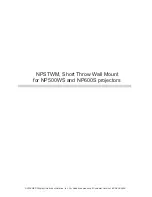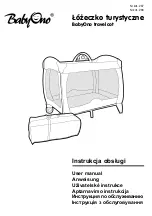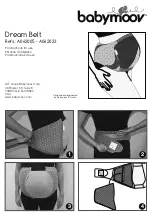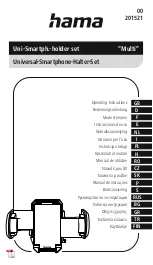
6.
Based on this information, the NexStar will automatically display the most suitable second alignment star that is above the
horizon. Press ENTER to automatically slew the telescope to the displayed star. If for some reason you do not wish to select
this star (perhaps it is behind a tree or building), you can either:
•
Press the UNDO button to display the next most suitable star for alignment.
•
Use the UP and DOWN scroll buttons to manually select any star you wish from the entire list of available stars.
Once finished slewing, the display will ask you to use the arrow buttons to align the selected star with the red dot of the
finderscope. Once centered in the finder, press ENTER. The display will then instruct you to center the star in the field of view
of the eyepiece. When the star is centered, press ALIGN to accept this star as your second alignment star. When the telescope
has been aligned to both stars the display will read
Align Success
, and you are now ready to find your first object.
Two Star Alignment
With the two-star alignment method, the NexStar requires the user to know the positions of two bright stars in order to accurately
align the telescope with the sky and begin finding objects. Here is an overview of the two-star alignment procedure:
1.
Once the NexStar is powered on, use the Up and Down scroll keys (10) to select Two-Star Align, and press ENTER.
2.
Press ENTER to accept the time/site information displayed on the display, or press UNDO to enter new information.
3.
The SELECT STAR 1 message will appear in the top row of the display. Use the Up and Down scroll keys (10) to
select the star you wish to use for the first alignment star. Press ENTER.
4.
NexStar then asks you to center in the eyepiece the alignment star you selected. Use the direction arrow buttons to
slew the telescope to the alignment star and carefully center the star in the finderscope. Press ENTER when
centered.
Helpful
Hint
5.
Then, center the star in the eyepiece and press ALIGN.
In order to accurately center the alignment star in the eyepiece, you may wish to decrease the slew rate of the motors
for fine centering. This is done by pressing the RATE key (11) on the hand controller then selecting the number that
corresponds to the speed you desire. (9 = fastest , 1 = slowest).
6.
NexStar will then ask you to select and center a second alignment star and press the ALIGN key. It is best to choose
alignment stars that are a good distance away from one another. Stars that are at least 40º to 60º apart from each other
will give you a more accurate alignment than stars that are close to each other.
Once the second star alignment is completed properly, the display will read
Align Successful
, and you should hear the
tracking motors turn-on and begin to track.
One-Star Align
One-Star Align requires you to input all the same information as you would for the Two-Star Align procedure. However, instead
of slewing to two alignment stars for centering and alignment, the NexStar uses only one star to model the sky based on the
information given. This will allow you to roughly slew to the coordinates of bright objects like the moon and planets and gives
the NexStar the information needed to track objects in altazimuth in any part of the sky. One-Star Align is not meant to be used
to accurately locate small or faint deep-sky objects or to track objects accurately for photography.
To use One-Star Align:
1.
Select One-Star Align from the alignment options.
2.
Press ENTER to accept the time/site information displayed on the display, or press UNDO to enter new information.
3.
The SELECT STAR 1 message will appear in the top row of the display. Use the Up and Down scroll keys (10) to
select the star you wish to use for the first alignment star. Press ENTER.
4.
NexStar then asks you to center in the eyepiece the alignment star you selected. Use the direction arrow buttons to
slew the telescope to the alignment star and carefully center the star in the finderscope. Press ENTER when centered.
5.
Then, center the star in the eyepiece and press ALIGN.
6.
Once in position, the NexStar will model the sky based on this information and display
Align Successful
.
Note: Once a One-Star Alignment has been done, you can use the Re-alignment feature (later in this section ) to improve your
telescope’s pointing accuracy.
14
Summary of Contents for NexStar 5 SE
Page 1: ...INSTRUCTION MANUAL ...
Page 45: ...45 dix D M Appen aps of Time Zones ...
Page 46: ......
Page 47: ......
Page 48: ......
Page 49: ......
Page 50: ......
Page 51: ......
Page 52: ......















































